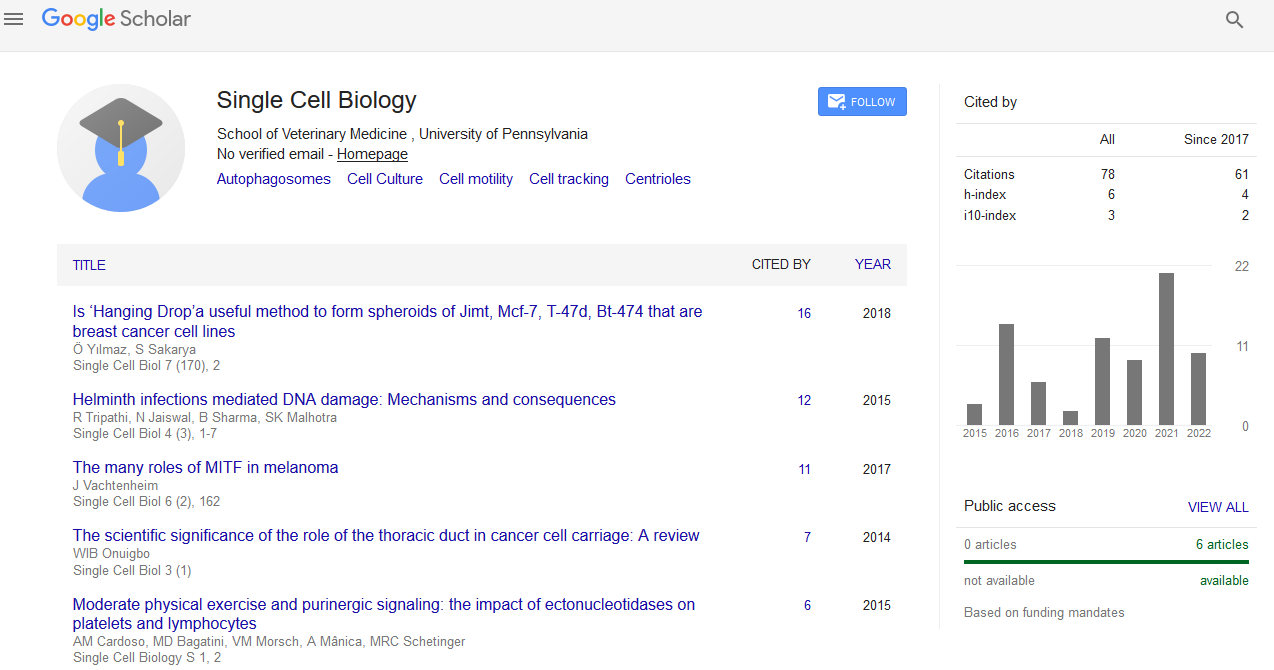PMC/PubMed Indexed Articles
Indexed In
- ResearchBible
- CiteFactor
- RefSeek
- Hamdard University
- EBSCO A-Z
- Publons
- Geneva Foundation for Medical Education and Research
- Euro Pub
- Google Scholar
Useful Links
Share This Page
Journal Flyer

Open Access Journals
- Agri and Aquaculture
- Biochemistry
- Bioinformatics & Systems Biology
- Business & Management
- Chemistry
- Clinical Sciences
- Engineering
- Food & Nutrition
- General Science
- Genetics & Molecular Biology
- Immunology & Microbiology
- Medical Sciences
- Neuroscience & Psychology
- Nursing & Health Care
- Pharmaceutical Sciences
Abstract
The Cycle of Kinetochore-Negative Micronuclei and Chromosome Fragments Occurred in Mitosis of Hela Cells
Xiuhong Zhou, Daxiang Li, Zhongwen Xie, Erkang Jiang, Lianping Wei, Fang Tao, Mei Yu and Shu Wang
According to the presence of kinetochores or not, MNi are further classified into kinetochore-negative MNi (K−MNi) and kinetochore-positive MNi (K+MNi), which show the different mechanisms of micronucleus formation. However, the differences in fates of K−MNi and K+MNi have not been completely addressed. The present study aims to address these questions. Methods: Here, HeLa CENP B-GFP H2B-mCherry cells were chosen to distinguish K+MNi and K−MNi in living cells. In the cells, MNi were identified by H2B-mCherry and further classified into K+MNi and K−MNi, i.e. the K+MNi contained CENP B-GFP, while the K−MNi did not. Long-term live-cell imaging was applied in the cells to record the dynamics of cell mitosis, especially K+MNi and K−MNi. Results: Our results show that the presence of K−MN or K+MN did not result in multipolar mitosis. K−MN-bearing cells produced much more chromosome fragments than did MN-free cells. Most of the chromosome fragments eventually merged into K−MNi. K+MN-bearing cells yielded more kinetochore-positive lagging chromosomes (K+LCs) and K+MNi than MN-free cells did. Conclusion: The results suggested the differences in the fates of K+MNi and K−MNi in mitosis. The cycle of K− MN → Chromosome fragment → K−MN may occur in generations of K−MN-bearing cells, while part of K+MNi might reincorporate into the main nucleus.

